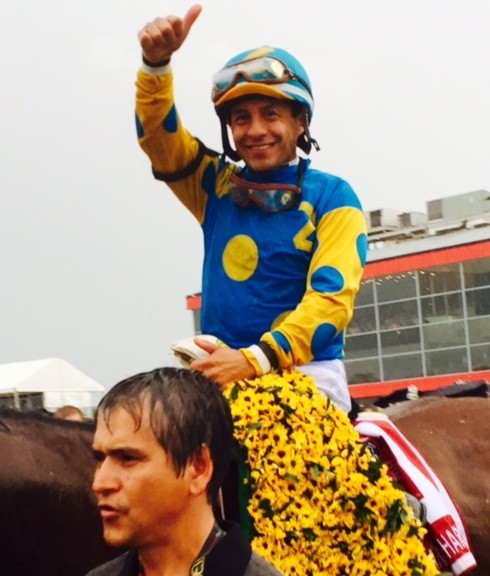Since Affirmed beat Alydar yet again to take the Triple Crown in 1978, 13 horses have come to Belmont with a chance to join the most exclusive club in Thoroughbred Racing. Now its American Pharoah’s turn. In the words of George Santayana, “those who cannot remember the past are condemned to repeat it.” American Pharoah has a lot of take-aways from the last 13 failed Triple Crown attempts. It might be June, but for American Pharoah, school is in session.
Like most things in life, horse races often come down to timing. A winner is often decided by not necessarily which horse is the fastest, but which horse does his best running at the right time.
As any good handicapper knows, most horses have “a move”. By this, I mean that most horses have a certain length of time when they can run in their highest gear. For some horses, this move can be of longer duration and only slightly faster then their usual “cruising” speed. Others have shorter moves, but the speed differential is much greater and the horse can put lengths in between himself and his competitors in a very short time span. The key for any horse’s connection is two fold: (1) knowing how long the move will last and (2) when to use it to be most effective. These two things are much easier said than done, just ask California Chrome.
Chrome won the Santa Anita Derby, Kentucky Derby and Preakness effectively making the same move at the same time. Chrome had a devastating move, that lasted about one furlong, which was usually commenced just before the top of the stretch. When it was over, his rivals were well behind him, and he carried his advantage the remaining 1+/- furlongs to the finish,
However, when it came time for the Belmont, many handicappers were wondering about Chrome’s move. Would he be able to execute it at the top of the stretch, and still hold on for not one but two full furlongs? Would the move still be there after running a mile a quarter? Would it be better to wait, and make the move in the stretch, inside the two furlong pole and leave him less time to have to hold off challengers after the move is made?
Chrome’s team decided to take the last route, wait until later in the race to ask the horse for his best gear, around the 3/16ths mark. The idea is great in theory, as it is the best way to avoid the “Don’t move too soon” lesson taught by Real Quiet, among many others.
However, when Victor Espinoza asked Chrome for that last gear, he came up empty. Once Chrome was asked for his best running, there was nothing left in the tank. The move was gone. Either the long campaign, the extra distance or possibly the injury to his foot suffered at the start sapped the move and Chrome did not have his usual strong kick to clear his rivals. Instead, Tonalist won, by less then two lengths over Chrome in fourth.
In effect, the decision to hold the move until later was a relinquishment of Chrome’s most effective weapon. Without his quick punch, Chrome did not have the advantage over the field that he had in previous starts.
What American Pharoah can learn from this is to make sure that he gets to his top gear at some point in the race. Although this is hard to know, Baffert and Victor must work together and try to determine when AP will still have his best stuff. He must be given an opportunity to do his best running, and no matter where that occurs have enough left in the tank to ward off any closing rivals.
The Belmont is the Test of Champions, as the winner must outlast the others to the finish. If AP is to join the most elusive club in all of American Racing, he will have to time his run just perfectly. It must be a Goldilocks ride. Not too soon, not too late; just right.

